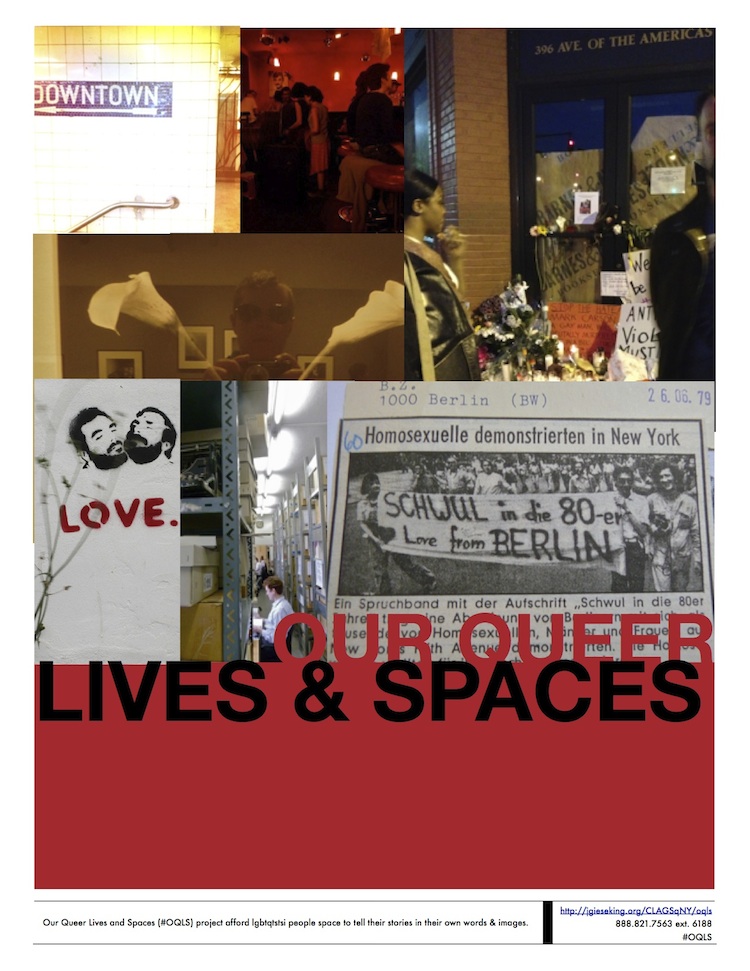Sharing the #CLAGSqNY Twitter Hashtag Archive & Its Relationships
For those of you interested not only in the conversations we shared in the “Queer(ing) New York” Seminar in the City I taught with the Center for Lesbian and Gay Studies in the spring of 2013–that are available via video on this site or in the comments below each week’s post for the course for those who talked in the chat window–the Twitter hashtag archive for #CLAGSqNY is now available below.
I have also rendered a social network analysis of Twitter mentions of various individual’s handles (namely those in the class) who used the #CLAGSqNY hashtag. Each dot below is a person or group tweeting. Each line indicates they mentioned or were mentioned by someone else connected to them. A total of 502 tweets let us see that three major networks of communication (based on the colors of the connections) formed on Twitter: @CLAGSNY (Center for Lesbian and Gay



